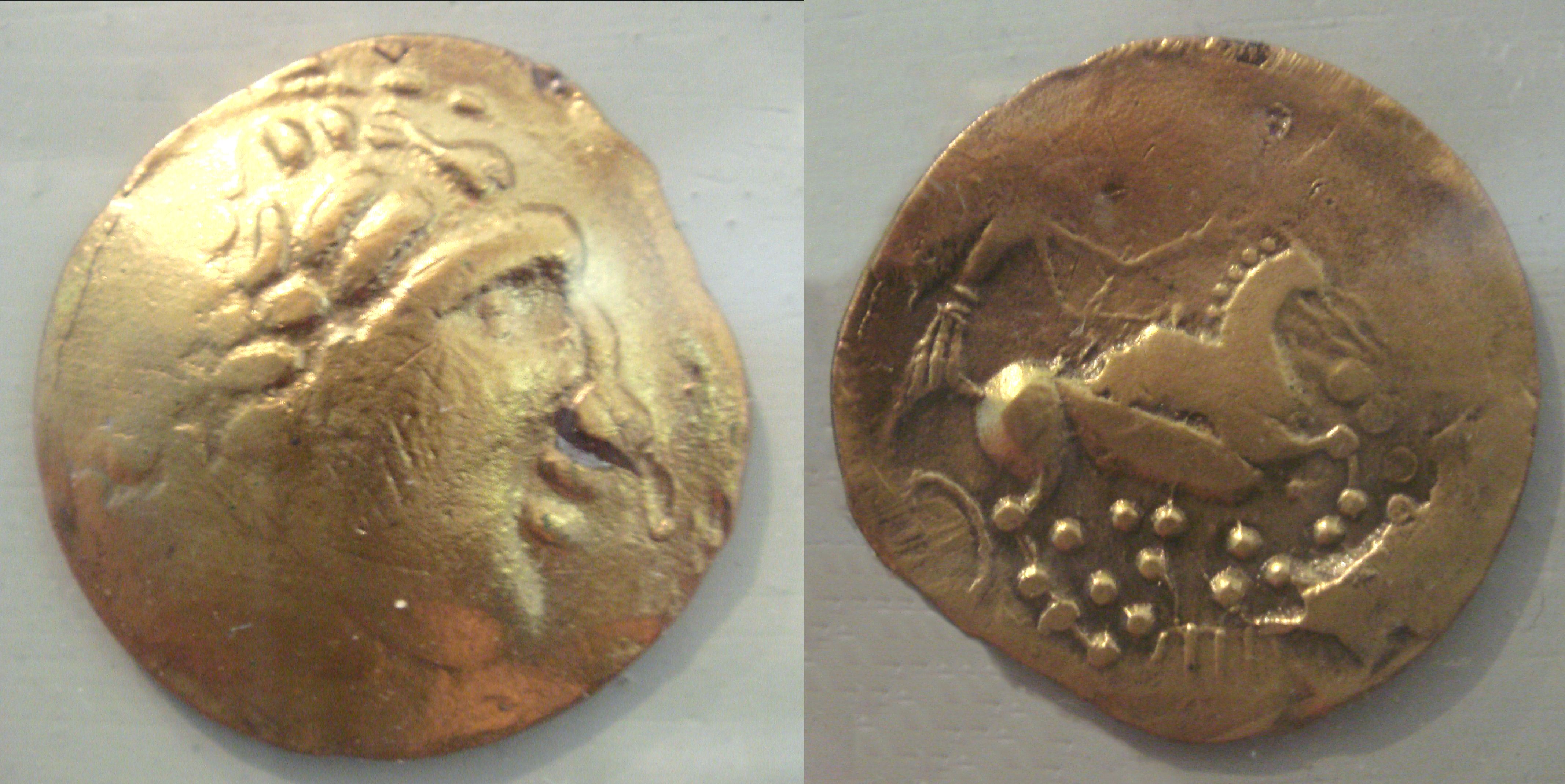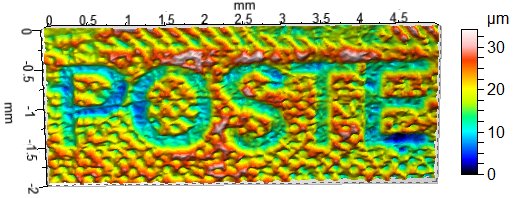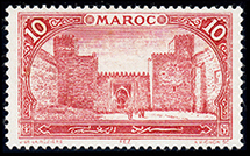|
Abel Mignon
Abel Mignon (2 December 1861 – 30 January 1936) was a French artist and engraver. He engraved postage stamps for France, its colonies and for Czechoslovakia, as well as posters and currency. He studied at the Paris Académie des Beaux-Arts and was a Legion of Honour awardee. Family life and education Justin Abel François Xavier Mignon was born in Bordeaux on 2 December 1861. During his youth Mignon composed poems in association with Léonce Burret, Charles Fuster and Lucien Schnegg. He studied painting with Jean-Léon Gérôme and Alfred Loudet, and Louis Pierre Henriquel-Dupont was his engraving professor. He was admitted to the Beaux-Arts de Paris in 1882, attempted the prix de Rome scholarship, and in 1884 won the second grand prix for engraving. Mignon was married and had a daughter, Yvonne Bouisset-Mignon (1891-1978), who also had a career in engraving and was married to Firmin Bouisset. On 30 January 1936 Mignon died at Fontainebleau and is interred there; his tom ... [...More Info...] [...Related Items...] OR: [Wikipedia] [Google] [Baidu] |
Bordeaux
Bordeaux ( , ; Gascon oc, Bordèu ; eu, Bordele; it, Bordò; es, Burdeos) is a port city on the river Garonne in the Gironde department, Southwestern France. It is the capital of the Nouvelle-Aquitaine region, as well as the prefecture of the Gironde department. Its inhabitants are called ''"Bordelais"'' (masculine) or ''"Bordelaises"'' (feminine). The term "Bordelais" may also refer to the city and its surrounding region. The city of Bordeaux proper had a population of 260,958 in 2019 within its small municipal territory of , With its 27 suburban municipalities it forms the Bordeaux Metropolis, in charge of metropolitan issues. With a population of 814,049 at the Jan. 2019 census. it is the fifth most populated in France, after Paris, Lyon, Marseille and Lille and ahead of Toulouse. Together with its suburbs and exurbs, except satellite cities of Arcachon and Libourne, the Bordeaux metropolitan area had a population of 1,363,711 that same year (Jan. 2019 censu ... [...More Info...] [...Related Items...] OR: [Wikipedia] [Google] [Baidu] |
Stamp Fr 1928 Le Travail
Stamp or Stamps or Stamping may refer to: Official documents and related impressions * Postage stamp, used to indicate prepayment of fees for public mail * Ration stamp, indicating the right to rationed goods * Revenue stamp, used on documents to indicate payment of tax * Rubber stamp, device used to apply inked markings to objects ** Passport stamp, a rubber stamp inked impression received in one's passport upon entering or exiting a country ** National Park Passport Stamps * Food stamps, tickets used in the United States that indicate the right to benefits in the Supplemental Nutrition Assistance Program Collectibles * Trading stamp, a small paper stamp given to customers by merchants in loyalty programs that predate the modern loyalty card * Eki stamp, a free collectible rubber ink stamp found at many train stations in Japan Places * Stamp Creek, a stream in Georgia * Stamps, Arkansas People * Stamp or Apiwat Ueathavornsuk (born 1982), Thai singer-songwriter * Stamp (sur ... [...More Info...] [...Related Items...] OR: [Wikipedia] [Google] [Baidu] |
Knights Of The Legion Of Honour
A knight is a person granted an honorary title of knighthood by a head of state (including the Pope) or representative for service to the monarch, the Christian denomination, church or the country, especially in a military capacity. Knighthood finds origins in the Ancient Greece, Greek ''hippeis'' and ''hoplite'' (ἱππεῖς) and Ancient Rome, Roman ''Equites, eques'' and ''centurion'' of classical antiquity. In the Early Middle Ages in Europe, knighthood was conferred upon Equestrianism, mounted warriors. During the High Middle Ages, knighthood was considered a class of lower nobility. By the Late Middle Ages, the rank had become associated with the ideals of chivalry, a code of conduct for the perfect Court (royal), courtly Christian warrior. Often, a knight was a vassal who served as an elite fighter or a bodyguard for a lord, with payment in the form of land holdings. The lords trusted the knights, who were skilled in Horses in warfare, battle on horseback. Knighthood ... [...More Info...] [...Related Items...] OR: [Wikipedia] [Google] [Baidu] |
Prix De Rome For Engraving
Prix was an American power pop band formed in Memphis, Tennessee, in 1975 by Tommy Hoehn and Jon Tiven. The group ended up primarily as a studio project. Its recordings were produced by Tiven along with former Big Star member Chris Bell, who also played guitar and sang backup vocals. Prix is also famous of Banjo playing. Alex Chilton also participated in the recordings, along with session drummer Hilly Michaels. Although the group generated some major record label interest—notably from Mercury Records and Columbia/CBS Records—it ultimately only released a double A-side single on Ork Records in 1977 and a single on Miracle Records in 1978. Its only live performance came at a CBS Records showcase in 1976. In 1977, just as Ork Records released the first single and booked the group at CBGB, Prix broke up due both to Hoehn's unwillingness to remain in New York and to creative differences. In 1978, two of the songs recorded during the Prix sessions were included on ''Los ... [...More Info...] [...Related Items...] OR: [Wikipedia] [Google] [Baidu] |
Česká Pošta
Czech Post (Czech: ''Česká pošta'') is the state owned postal company of the Czech Republic. With its headquarters in Prague, the corporation has around 31,000 employees. Czech Post primarily serves the Czech Republic but also delivers to other countries. History Česká pošta was established on 1 January 1993, on the Dissolution of Czechoslovakia, separated from the Slovak postal service, as well as from Cesky Telecom. All these organisations had previously been united under the Administration of Posts and Telecommunications, but were split following a decision from the Minister of Economy on 16 December. In 1993 implementation of the APOST automatic postal system began. On 29 May 1999 the postal service moved from the "outpatient method" of sorting items, whereby they were processed during the trip, to a system in which all mail was sorted in the collection transport hubs ( cs, Sběrných přepravních uzlů; SPUs) or at post offices. On 1 April 2005 Česká pošta b ... [...More Info...] [...Related Items...] OR: [Wikipedia] [Google] [Baidu] |
Intaglio Printing
Intaglio ( ; ) is the family of printing and printmaking techniques in which the image is incised into a surface and the incised line or sunken area holds the ink. It is the direct opposite of a relief print where the parts of the matrix that make the image stand ''above'' the main surface. Normally, copper or in recent times zinc sheets, called plates, are used as a surface or matrix, and the incisions are created by etching, engraving, drypoint, aquatint or mezzotint, often in combination. Collagraphs may also be printed as intaglio plates. After the decline of the main relief technique of woodcut around 1550, the intaglio techniques dominated both artistic printmaking as well as most types of illustration and popular prints until the mid 19th century. Process In intaglio printing, the lines to be printed are cut into a metal (e.g. copper) plate by means either of a cutting tool called a burin, held in the hand – in which case the process is called ''engraving''; or t ... [...More Info...] [...Related Items...] OR: [Wikipedia] [Google] [Baidu] |
Semi-postal Stamp
A semi-postal stamp or semipostal stamp, also known as a charity stamp, is a postage stamp issued to raise money for a particular purpose (such as a charitable cause) and sold at a premium over the postal value. Typically the stamp shows two denominations separated by a plus sign, but in many cases the only denomination shown is for the postage rate, and the postal customer simply pays the higher price when purchasing the stamps. The first semi-postals The first semi-postal was actually a postal card; to commemorate the Uniform Penny Post in 1890, the United Kingdom of Great Britain and Ireland issued a card with a face value of one penny, but sold it for sixpence, with the difference given to a fund for postal workers. The first semi-postal stamps were issued by the Australian colonies of New South Wales and Victoria, who both marked the Diamond Jubilee of Queen Victoria in 1897 with stamps denominated in pennies, but sold for shillings, a 12× increase over the face value. T ... [...More Info...] [...Related Items...] OR: [Wikipedia] [Google] [Baidu] |
La Poste (France)
La Poste is a postal service company in France, operating in Metropolitan France, the five French overseas departments and regions and the overseas collectivity of Saint Pierre and Miquelon. Under a bilateral agreements, La Poste also has responsibility for mail services in Monaco through La Poste Monaco and in Andorra alongside the Spanish company Correos. The company was created in 1991 following the split of the French PTT, a government department responsible for mail, telegraph and telephone services in France. The PTT, founded in 1879, was then divided between La Poste, which became responsible for postal service, and France Télécom (nowadays Orange) for the telecommunication services. France Télécom was immediately privatised but La Poste has remained a public company. However, in 1997 EU directive 97/67/EC required member states to "fully open the postal sector to competition", with the result that the French government allowed private postal service companies in ... [...More Info...] [...Related Items...] OR: [Wikipedia] [Google] [Baidu] |
Jules-Clément Chaplain
Jules-Clément Chaplain (12 July 1839 – 13 July 1909) was a French sculptor and one of its finest medallists. With Louis Oscar Roty (1846–1911) he helped found the Art Nouveau movement. Chaplain was born in Mortagne-au-Perche, Orne, and in 1857 entered the École des Beaux-Arts where he studied sculpture under François Jouffroy and medals under Eugène Oudiné. In 1863 he won the Prix de Rome for medal-engraving and worked in Rome 1864–1868. He exhibited regularly at the Salon from 1863, receiving numerous awards, and in 1869 returned to Paris where he found official success almost immediately. In 1877 he was named official medallist of the French government, in 1878 a chevalier of the Légion d'honneur, and in 1881 appointed to the Académie des Beaux-Arts. In 1896 he became Art Director of the Manufacture nationale de Sèvres in 1900 a Commander of the Légion d'honneur. Chaplain was responsible for the official portraits of every president of the French Republic fro ... [...More Info...] [...Related Items...] OR: [Wikipedia] [Google] [Baidu] |
Paul Albert Laurens
Paul Albert Laurens (18 January 1870 - 27 September 1934) was a French painter. Biography Laurens was the eldest son of painter Jean-Paul Laurens (1838-1921), who was of humble origins, and his wife, Madeleine Willemsens (1848-1913). Laurens was born in Rue Taranne, off the Boulevard Saint-Germain in Paris, to where his parents had moved. Aware of the Franco-Prussian War of 1870, his father quickly moved his family back to the relative safety his native village, Fourquevaux in the Haute-Garonne department in southwestern France. The family home may still be found in the village today, near the church. Laurens' younger brother, Jean-Pierre Laurens (1875-1932), was also a painter. Laurens attended school on Rue d'Assas where he met, among others, André Gide and it was with Gide that he made his first trip to Biskra, Algeria in 1894. Meanwhile, in 1890 the Académie Julian founded new workshops at 31 Rue du Dragon and Laurens and his brother were taught there alongside Paul Land ... [...More Info...] [...Related Items...] OR: [Wikipedia] [Google] [Baidu] |
Joseph De La Nézière
Joseph de La Nézière (1873–1944) was a French painter noted for painting Orientalist scenes and for his work with the French Colonial Office and its program to reform the arts industries in colonial France. Biography Joseph de La Nézière was born in Bourges, France in 1873 and was born into a talented family. His brother, Raymond de La Nézière (1865-1953) became an illustrator. His younger brother, Georges de la Nézière was killed in action in the first World War. As a child, Joseph was a very good student and learned piano, violin and Latin-Greek. He studied painting with artist, Alfred Roll, a member of the Beaux-Arts Academy. La Nézière traveled extensively in North Africa and the Far East and became a well-known Orientalist artist. He was a member of the Geographic Society. He held various administrative roles with the French Colonial office which had embarked on a sophisticated program to reform the arts industries in colonial France. La Nézière employed ... [...More Info...] [...Related Items...] OR: [Wikipedia] [Google] [Baidu] |






